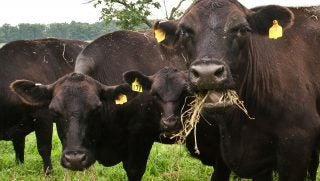Why the Non-GMO Project demands mandatory ‘right to know’ labeling but is taking issue with the USDA’s mandatory ‘right to know’ labeling
Since the Non-GMO Project began in 2007 they’ve done an excellent job of misinforming consumers about and instilling in us an irrational fear of genetically modified foods, all while under the guise of educating and informing. While they have been demanding the right to know what’s in our food for quite some time, they seem to be taking issue with the USDA’s response to that demand — the National Bioengineered Food Disclosure Standard (NBFDS) and the mandatory “bioengineered” label.
Recently, in December 2018, the UDSA finalized the NBFDS, which requires food manufacturers, importers, and certain retailers to ensure bioengineered foods are appropriately disclosed. The standard defines bioengineered foods as those that contain detectable genetic material that has been modified through certain lab techniques and cannot be created through conventional breeding or found in nature. It will be implemented on January 1, 2020, and all bioengineered products will require labeling by January 1, 2022.
This should be great news for those demanding the “right to know,” especially for the Non-GMO Project, who has been largely leading the charge. However, the Non-GMO Project says that “Americans deserve better than the USDA’s GMO labeling law.”
So, why aren’t they satisfied with the new standard?
First, the Non-GMO Project has spent a lot of time and money creating unnecessary fear around the term “GMO.” So, the fact that this new standard uses the term “bioengineered” rather than “GMO” really bothers them. They even admit this in an article published on their website:
“Using intentionally confusing terminology misleads consumers and keeps them in the dark. It is clear that using ‘bioengineered’ instead of ‘GMO’ or ‘genetically engineered’ is an attempt to distance labeled products from the overwhelming consumer rejection of GMO foods.”
Hmm … if anyone knows anything about using intentionally confusing terminology that misleads consumers and keeps them in the dark it’s definitely the Non-GMO Project.
Although they have basically rendered the term “GMO” meaningless, that’s not the reason why the USDA won’t be using it. The Non-GMO Project defines a “GMO” as “a plant, animal, microorganism or other organism whose genetic makeup has been modified in a laboratory using genetic engineering or transgenic technology.” However, the acronym “GMO” — which literally stands for “genetically modified organism” — creates confusion because virtually everything we eat has had its genes modified in some way, either through traditional plant breeding processes, such as selective breeding and cross-breeding, or through more modern means, such as mutagenesis and transgenesis. So, the term “GMO” is too vague to describe only crops that have been modified through transgenesis. Transgenic crops have precise, limited genes added or silenced through bioengineering to achieve a beneficial outcome, which is why “bioengineered” or “BE” is a much more accurate term for commercially available transgenic crops.
It’s ironic that the Non-GMO Project is calling out the USDA for using confusing and misleading terminology when their “non-GMO” label is the epitome of confusing and misleading. According to a recent study, the more strongly people report being opposed to GM foods, the more knowledgeable they think they are on the topic, but the lower they score on an actual knowledge test. So, it works in the Non-GMO Project’s favor to keep consumers misinformed about genetically modified foods, and they know that.
Another reason why the Non-GMO Project doesn’t like the NBFDS is that it exempts foods that have been highly refined so that the modified genetic material is not detectable, such as high fructose corn syrup, refined soybean oil, and sugar from sugar beets. Yes, it absolutely does exempt these foods, and with good reason. None of these substances contain DNA and, therefore, can’t possibly even contain modified genes. So, why does it upset the Non-GMO Project? Because they allow their “non-GMO” label on foods that don’t contain genes, so they think the USDA should be required to follow suit. Should a product that doesn’t even contain genes really be required to have a label stating that the nonexistent genes are or aren’t genetically modified? Of course not, but let’s not forget that the Non-GMO Project makes money off of every single one of their labels on every single product, so that’s definitely motivation for them to get it on as many products as possible.
To illustrate how ridiculous this is, let’s take sugar, for example. A bag of sugar sitting on a shelf in the grocery store that has been refined from non-GMO sugar cane could bear the “non-GMO” label. However, a bag of sugar sitting right next to it that has been refined from genetically modified sugar beets wouldn’t be allowed to have the “non-GMO” label, but it also wouldn’t require the “bioengineered” symbol because sugar literally doesn’t contain genes. The Non-GMO Project doesn’t think this is right. They think that a bag of sugar should be required to bear the “bioengineered” label if it’s derived from a genetically modified source even though the actual sugar doesn’t contain any genes. They want you to think that the bag of sugar with the “non-GMO” label is somehow superior even though both bags contain the exact same chemical compound: sucrose.
Well, if they are actually trying to educate consumers I’m not sure how this would be accomplishing that because it makes absolutely no sense. They’ve done a remarkable job of making consumers fear “GMOs,” so the more products they can slap their deceptive label on, whether they contain genes or not, the more it does to unnecessarily scare consumers into thinking “GMOs” must be bad, even though this couldn’t be further from the truth. GMOs are just as safe and nutritious (sometimes even more nutritious) as their non-GMO counterparts, but activist organizations definitely don’t want you to know that. So, you can see how the NBFDS is actually based on science, while the non-GMO label has practically no basis in science and only serves to confuse, fear monger and perpetuate misinformation.
The Non-GMO project claims that “while 97 percent of consumers are familiar with the term GMO, most people do not understand what bioengineered food means.” While it may be true that consumers have seen the term GMO at some point in their lives and, therefore, are “familiar” with it, this in no way means they understand what GMOs are or that they are just as safe and nutritious as their non-GMO counterparts. In fact, 69 percent of consumers are not confident they know what GMOs are, and less than a third of Americans (32 percent) say they are comfortable with the use of GMOs in their food products despite overwhelming health and safety consensus among experts. So, it stands to reason that the presence of the Non-GMO Verified symbol isn’t working at all to educate consumers, and in actuality is doing quite the opposite.
Perhaps those demanding the “right to know” should first understand what they are demanding the right to know about. It will be very eye opening to consumers once the NBFDS is put into action just how many products won’t require the bioengineered label. Many misinformed consumers believe that products without the non-GMO label must, by default, be GMO. They will soon find out that this isn’t the case. Many products that haven’t bought into the non-GMO label also won’t require the bioengineered label. Hopefully the bioengineered label and messaging around it will help to educate consumers about the safety of genetically modified foods. If nothing else, it will serve to show consumers just how many products are not genetically modified despite those companies not playing into consumer fears and paying the Non-GMO Project for their deceptive, fear-mongering label.
Food Science Babe is the pseudonym of an agvocate and writer who focuses specifically on the science behind our food. She has a degree in chemical engineering and has worked in the food industry for more than decade, both in the conventional and in the natural/organic sectors.



